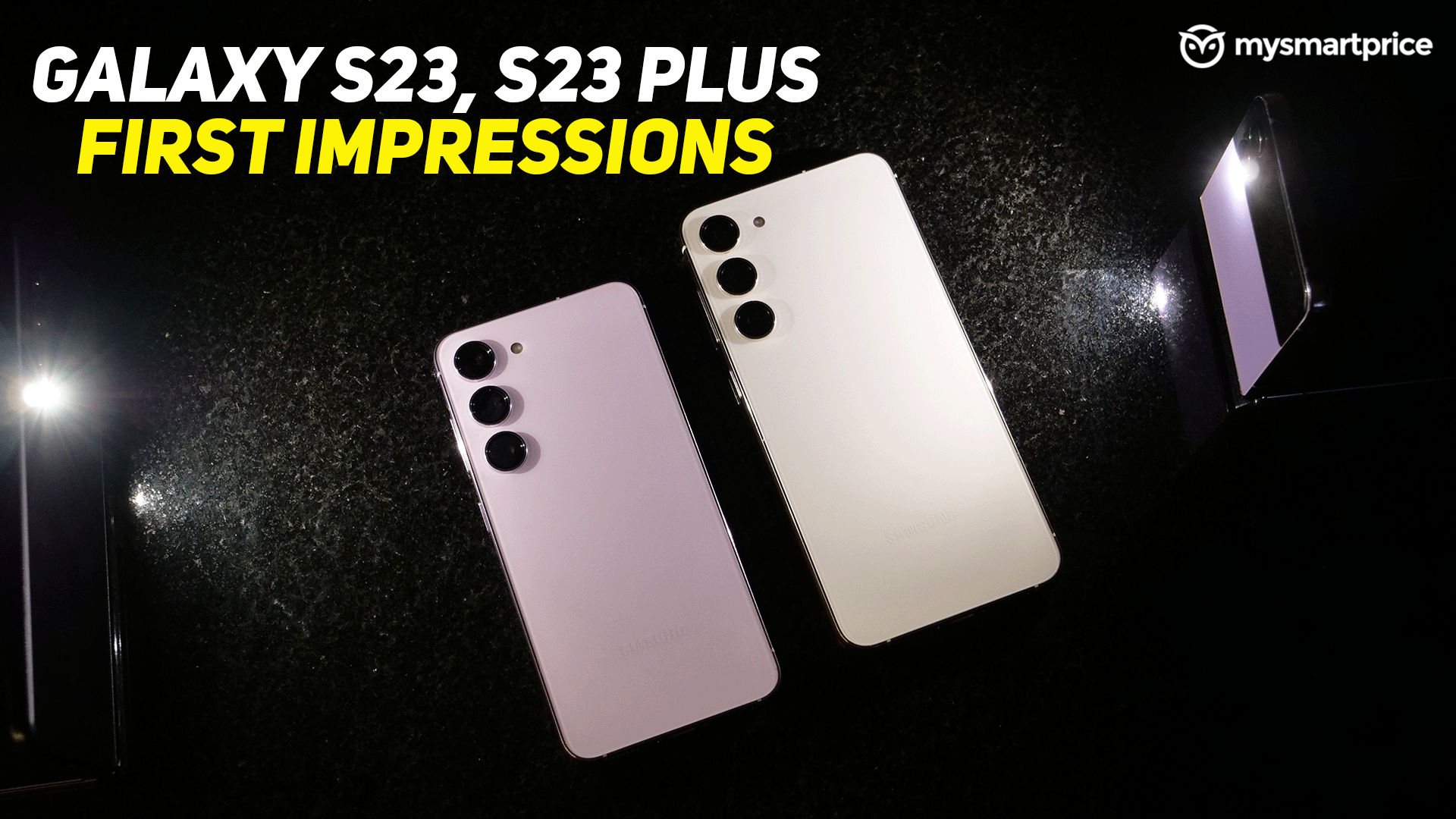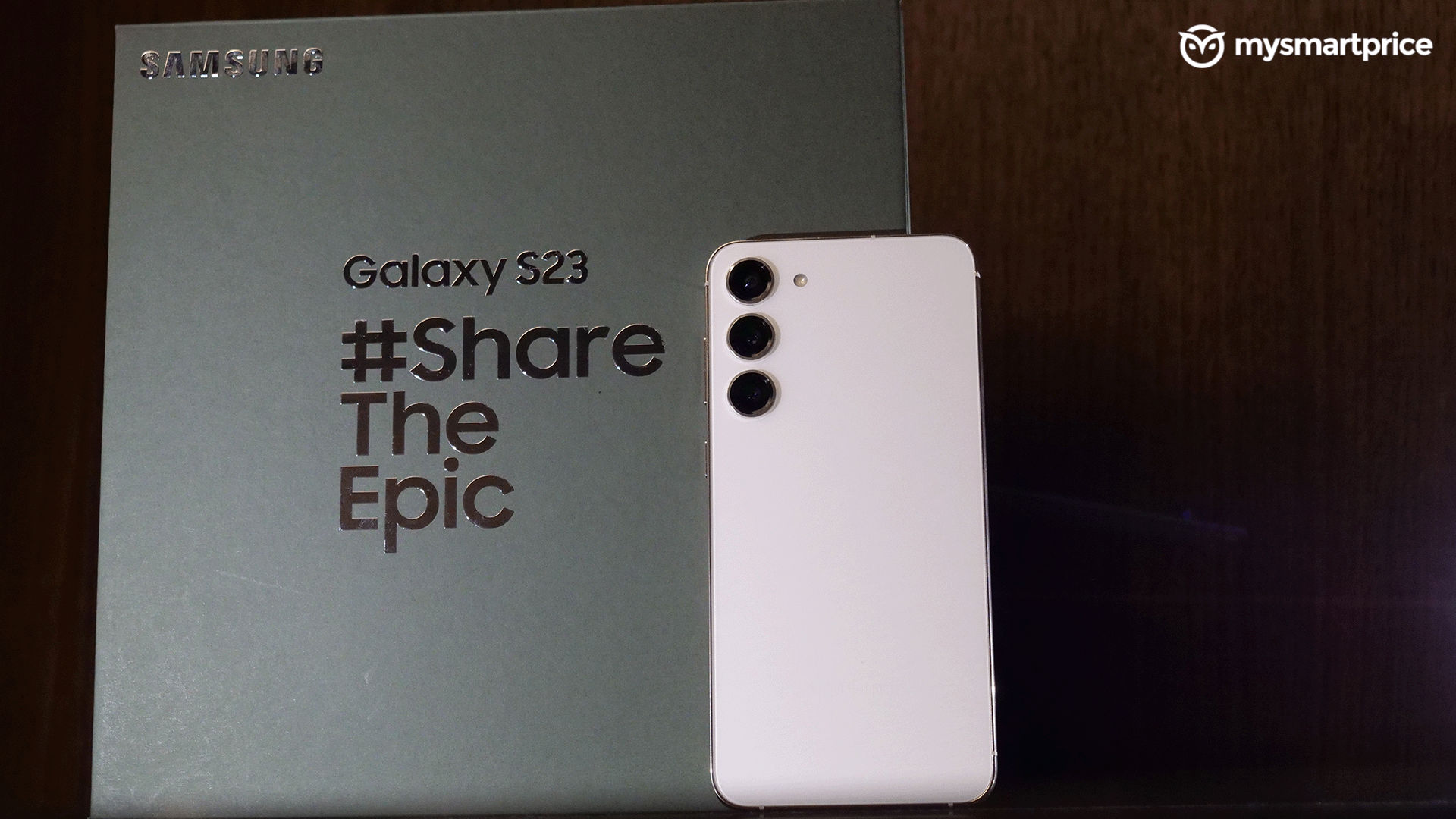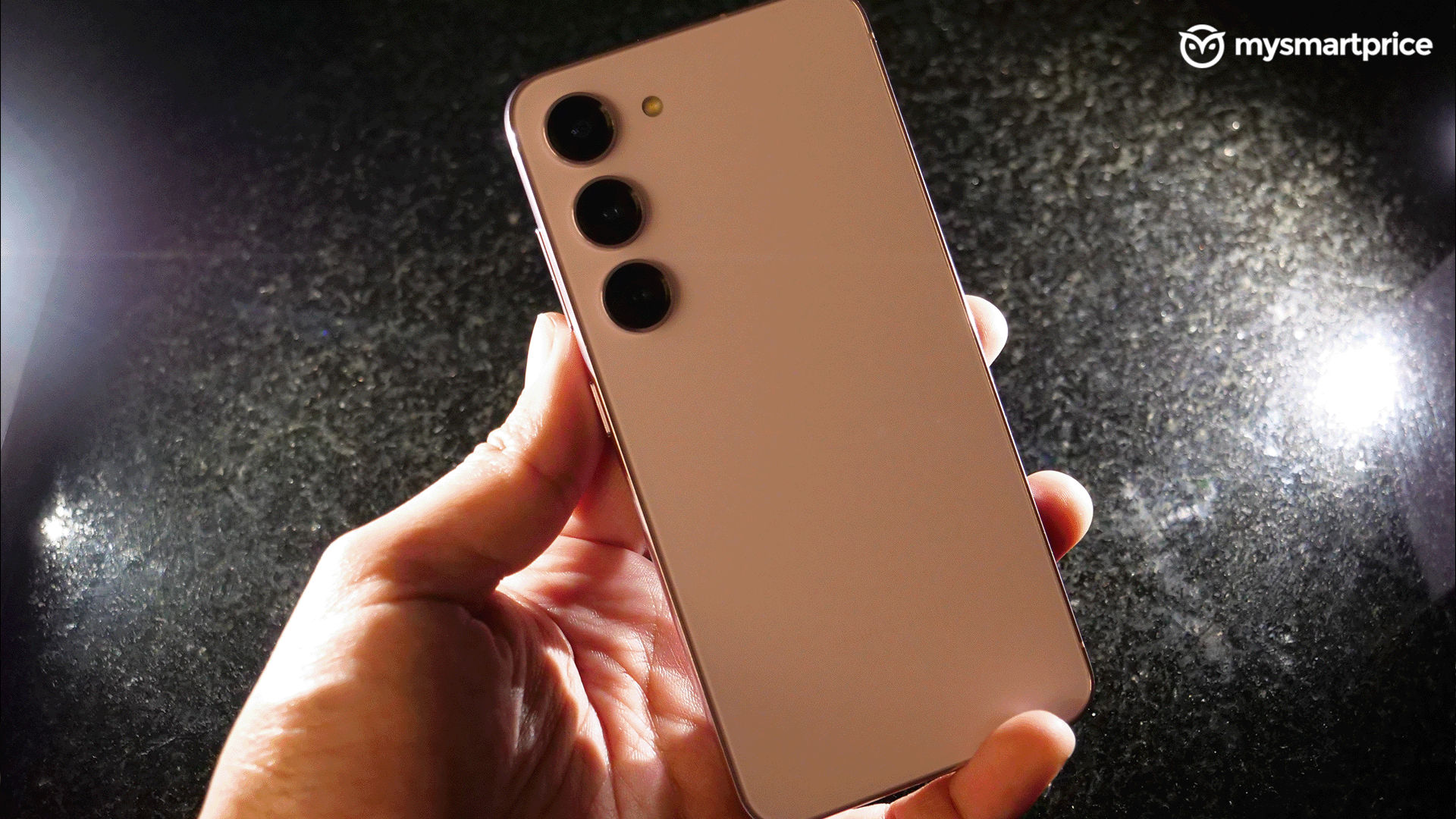- The Galaxy S23 and the S23 Plus will have the same two variants
- Overall, Samsung has a 34% bump in CPU output and 41% improvement in graphics.
- The Galaxy S23 series ships with One UI 5.1, based on Android 13.

Samsung always believes in having a head start with their flagships, and this year it’s no different. The Galaxy S23 series is here, with possibly the latest and greatest hardware available. We got our hands on all three siblings, but in this first impression, we will be talking about the S23 and S23 Plus, as they share much more in common than the big-boy Ultra variant.
Do note that our impressions were formed based on the information presented to us – Samsung was tight-lipped not to reveal all the little surprises of its top flagship offerings, and we respect that too. We will, however, update the specifications and features as and when we are presented with the final spec sheet. Till then, join us with our experience of the two smartphones.

Samsung Galaxy S23, Galaxy S23 Plus: First Impressions
The Galaxy S23 and the S23 Plus design language seems familiar, but there are some important distinctions from the predecessors. First, the easiest way to spot the smaller S23 smartphones is by looking at the rear camera module. They are now in sync with the Ultra variant, so there’s no camera island emerging from the frame – all lenses have individual camera rings around them. Second, the colours – Lavender and Cream are the new shades to look out for. Because our pictures won’t do justice given the poor lighting in the briefing areas, the Lavender trim is slightly less vibrant than the Bora Purple colourway of the Galaxy Z Flip 4 (review).
The Galaxy S23 series, in general, now feature the latest and greatest chipsets from Qualcomm, the Snapdragon 8 Gen 2, but with a few customisations made specifically for the series. However, the accompanying RAM and storage options have remained exactly the same. So, the S23 and the S23 Plus will have the same two variants, 128GB and 256GB of storage, with a constant RAM capacity of 8GB.
Overall, Samsung has a 34% bump in CPU output and 41% improvement in graphics, whereas the neural processing unit horsepower is being hiked by as much as 49%, which accounts for all the crazy photography chops we’ll get to in a bit. Also, given the virtue of the Snapdragon 8 Gen 2 SoC, the Galaxy S-series will be able to churn out ray-traced graphics, a first for any Galaxy smartphone. This solves the chicken and egg puzzle – the egg of hardware is here, so it’s only a matter of time before software developers start spawning chicks, in the form of games and apps, to take advantage of the tech.
Heating issues hampered our experience with the Galaxy S22+ (review), but it seems like Samsung has heard our prayers. Vapour Cooling chambers are finally here, upping the game from the Graphite Cooling system of the yesteryears, and they are nearly twice as big.
Along with this, the Galaxy S23 series also ships with One UI 5.1, based on Android 13. During the closed-room briefings, Samsung reps were tight-lipped about some new features. Still, we can confirm a few things, such as the presence of an AI-powered adaptive performance mode, which automatically figures out how much power to extract from the SoC while playing games and ensures performance stability over longer durations. Other software tweaks include video streaming optimisation, which helps with power saving and HDR while playing videos across streaming platforms.
Speaking of power saving, Samsung has boldly claimed all-day battery life in all their devices. If you’re a vanilla or a plus Galaxy S22 user, there are chances you might have faced battery anxiety by evening. Samsung says about 22% battery savings can be expected across the three smartphones. To be specific, the S23 Plus comes with a 4,700mAh battery pack, whereas the smaller sibling gets 3,900mAh of juice. This is a 200mAh difference between both predecessors. Sadly, the charging speed is still the same. When asked why Samsung said it’s done to preserve battery longevity.

Otherwise, the display specs are identical to last year. We have the same 6.6-inch FHD+ AMOLED panel on the Plus variant and the 6.1-inch on the baby brother. They still refresh at 120Hz and have the same 1750 nits and 1300 nits of peak brightness, respectively. The only difference is in the form of display protection, Corning Gorilla Glass Victus 2 now blesses the displays, and the display brightness is now adaptive.
The rear has the same megapixel and lens configuration, so we have a 50-megapixel primary, 10-megapixel tele and 12-megapixel ultrawide cameras. The 50-megapixel primary sensor is new, though, and Samsung was hush-hush about naming them. In terms of new camera features, we were only told about the selfie HDR getting better, but we are sure more details will come out in the keynote.
All three Galaxy S23 smartphones are entirely made of recycled materials, including the S-Pen, rear glass, plastics and even the Gorilla Glass Victus 2 at the front! The colours are made of natural dyes instead of synthetic dyes.

Samsung Galaxy S23, Galaxy S23 Plus: Initial thoughts
With the new design changes, the Samsung Galaxy S23 and S23 Plus seem to appear more and more like the Ultra. We are glad that steps have been taken to make the phones more powerful while keeping thermals in check. Pricing is yet to be announced at the time of writing, but keep an eye out on our website for the complete Indian pricing in the hours to come. Also, our full review of the two phones will be out very soon, so do keep an eye out on our reviews page as well.



















